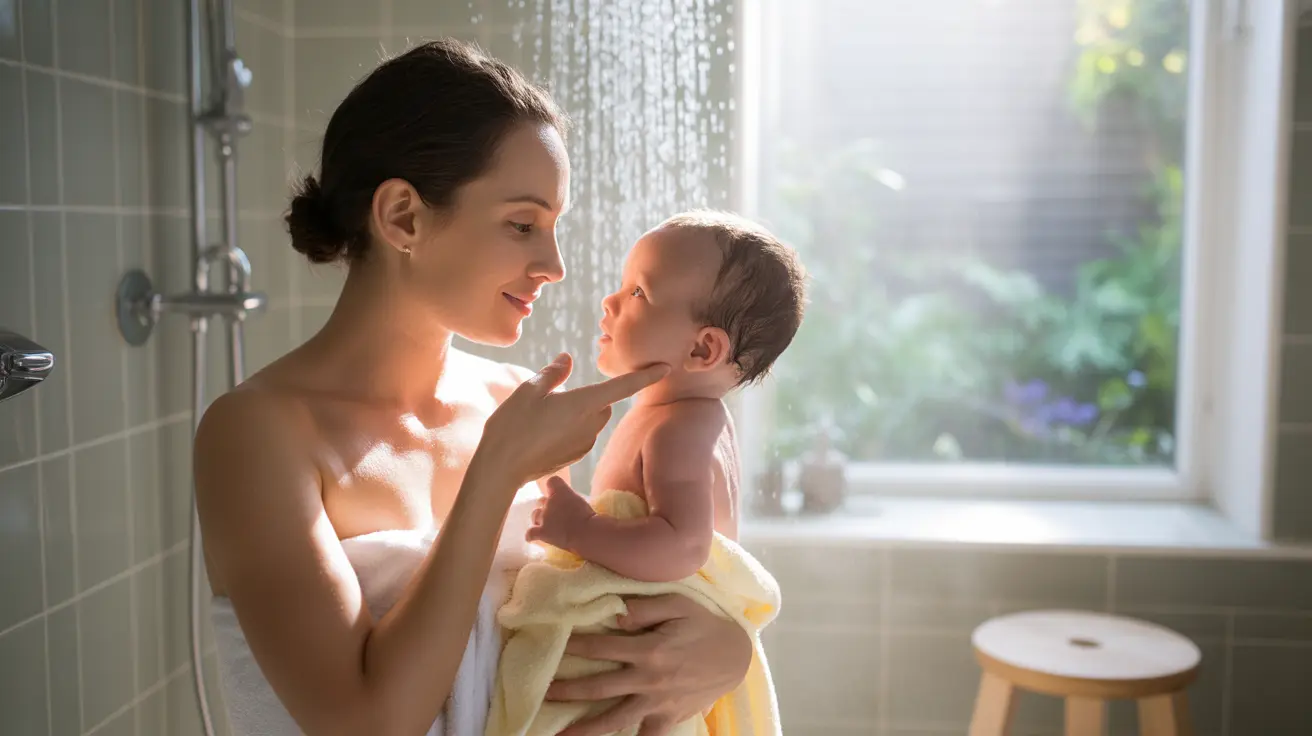Showering with your baby can be a wonderful bonding experience, offering practical benefits for both parent and child. However, knowing when and how to safely share shower time with your infant requires careful consideration and proper preparation. This guide will help you understand the essential aspects of showering with your baby, ensuring both safety and comfort.
When to Start Showering with Your Baby
Most pediatricians recommend waiting until your baby's umbilical cord stump has fallen off and healed completely, which typically occurs around 1-2 weeks after birth. Additionally, any circumcision wounds should be fully healed before introducing your baby to shower time.
Once these milestones are reached, you can begin considering shared showers, but always consult with your pediatrician first to ensure it's appropriate for your specific situation.
Essential Safety Measures for Shower Time
Preparation Steps
Before stepping into the shower with your baby, take these important precautions:
- Install non-slip mats both inside and outside the shower
- Gather all necessary supplies within arm's reach
- Ensure proper water temperature before entering
- Remove any dangling jewelry that could scratch your baby
- Consider using a shower chair for added stability
Creating a Safe Environment
The shower environment must be properly prepared to minimize risks:
- Keep shower products away from the edge where they could fall
- Ensure proper ventilation in the bathroom
- Remove any sharp objects or hazards from the shower area
- Consider installing grab bars for additional support
- Use a shower head with adjustable water pressure settings
Proper Water Temperature and Settings
Water temperature is crucial for your baby's safety and comfort. The ideal temperature should be between 90-100°F (32-37.8°C). Always test the water on your inner wrist before exposing your baby to it.
Water Safety Tips
- Use a bath thermometer for precise temperature monitoring
- Keep the water pressure gentle
- Position your baby away from direct water spray
- Maintain consistent temperature throughout the shower
Safe Baby Holding Techniques
Proper support is essential when showering with your infant. The safest holding position is to cradle your baby with one arm while keeping their head supported and away from direct water spray. Your baby's head should rest in the crook of your elbow, with your hand supporting their bottom and legs.
Key Holding Points
- Always maintain a secure grip
- Support head and neck carefully
- Keep baby's face away from water spray
- Use your body to shield from strong water flow
Appropriate Products and Materials
Choose gentle, baby-specific products that won't irritate your infant's sensitive skin:
- Fragrance-free baby wash
- Tear-free shampoo
- Soft washcloth or sponge
- Clean, soft towel designated for baby
Frequently Asked Questions
When is it safe to start showering with my baby after birth?
You can begin showering with your baby once their umbilical cord stump has fallen off and healed completely, typically around 1-2 weeks after birth. If your baby had a circumcision, wait until this has also fully healed.
What safety precautions should I take when showering with my baby?
Essential safety measures include installing non-slip mats, ensuring proper water temperature, removing jewelry, keeping supplies within reach, and maintaining a secure hold on your baby at all times.
What is the recommended water temperature for showering with an infant?
The ideal water temperature should be between 90-100°F (32-37.8°C). Always test the water on your inner wrist first and use a bath thermometer for accuracy.
What products are safe to use on my baby during a shower?
Use only gentle, baby-specific products that are fragrance-free and tear-free. Choose products specifically formulated for infant skin and avoid adult soaps and shampoos.
How can I securely hold and support my baby while showering together?
Support your baby's head in the crook of your elbow while cradling their body with one arm. Keep their face away from direct water spray and maintain a firm but gentle grip at all times.
Remember, shower time with your baby should be a calm, enjoyable experience. Take your time, stay focused on safety, and enjoy these precious moments of bonding with your little one.




